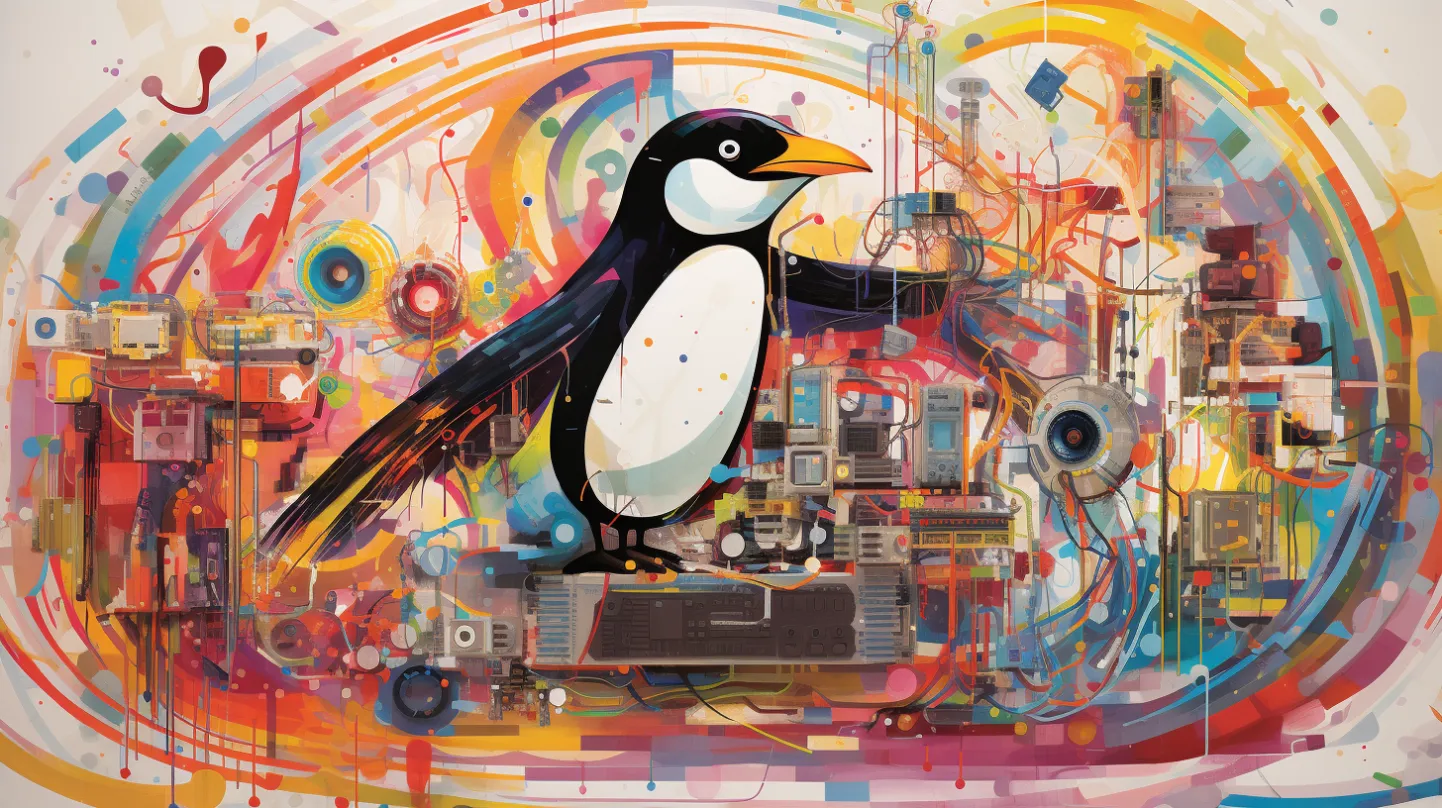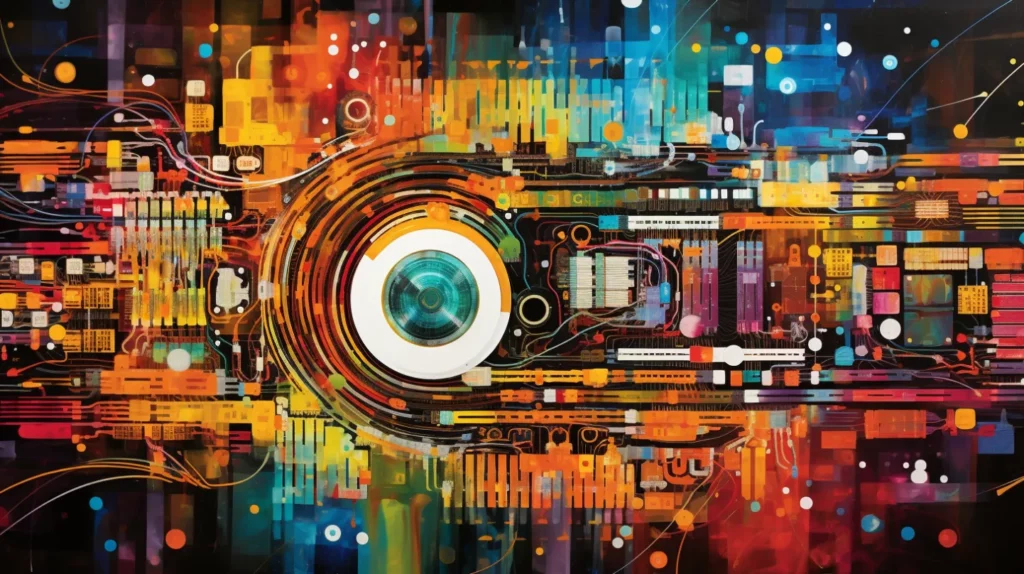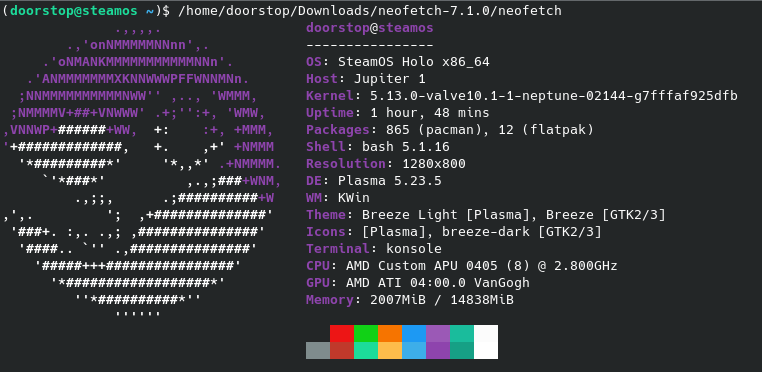22 Interesting Facts About Linux

Linux is one of the most influential and widely used open-source operating systems in the world today. With a long history and massive global footprint, Linux has many fascinating facts behind its origins, growth, and current status in technology. Let’s explore some of the most captivating tidbits about the legendary OS.
Introduction
Linux has come a long way since its humble beginnings as a hobby project by a student in Finland. Now powering everything from smartphones to supercomputers, Linux is a pillar in modern computing.
This in-depth guide will uncover 27 intriguing facts about the history, development, adoption, and future of the Linux operating system and community. Whether you’re a Linux enthusiast or simply curious, read on to learn how Linux conquered the world.
Origins of Linux

- Linux was created in 1991 by Linus Torvalds as a hobby project Linus Torvalds first announced Linux in August 1991 as a hobby project he had been working on. At the time, Torvalds was a 21-year-old computer science student at the University of Helsinki in Finland. Frustrated by licensing restrictions on the Minix operating system he was using, Torvalds decided to create his own free Unix-like kernel. He named it “Linux” by combining his name with his favorite operating system (Unix).
- The Linux kernel is the core component that manages hardware resources The Linux kernel is the central module of the OS and handles critical tasks like CPU, memory, and device management. It provides an interface for user-space components like applications and libraries to access hardware. Thousands of developers from companies like Red Hat, IBM, Intel, Samsung and individuals contribute code to evolve the Linux kernel.
- Linux is licensed under the GNU GPL, allowing anyone to freely use, modify, and distribute the source code Linux is distributed under the GNU General Public License (GPL) created by Richard Stallman. This open source license allows the source code for Linux to be freely used, modified, and shared by anyone. This licensing enabled Linux to be collaboratively developed on a global scale by programmers contributing their skills and code.
Growth and Adoption

- There are hundreds of Linux distributions tailored for different uses A Linux distribution bundles the Linux kernel with software like the GNU tools, desktop environments, and large application suites to create a complete OS. Popular general-purpose distros include Ubuntu, Debian, Fedora, openSUSE, Mint, and Arch Linux. There are also specialized distros like Tails (privacy), Kali (security), SteamOS (gaming), and more.
- With over 17 million lines of code, the Linux kernel is one of the largest software projects ever The Linux kernel code base has steadily grown over three decades to become one of the largest and most complex open-source software projects. As of version 4.17 released in 2018, the Linux kernel contains more than 17.8 million lines of code contributed by over 19,000 programmers around the world.
- Android, the world’s most popular mobile OS, is built on the Linux kernel When Android was first released in 2008, it revolutionized mobile computing with an open, Linux-based platform. Android has now grown to over 2 billion monthly active devices worldwide. Other mobile operating systems like Tizen, webOS, and Maemo are also built using the Linux kernel and components.
- The majority of the public cloud runs on Linux AWS, Microsoft Azure, Google Cloud, IBM Cloud, and Oracle Cloud – the major players in cloud computing – unanimously provide virtual machine images running Linux distributions. With stability, security, portability and low resource requirements, Linux dominates the cloud computing landscape today.
- Linux powers all of the top 500 supercomputers in the world For high-performance computing, Linux has no competition. All of the world’s top 500 fastest supercomputers run on Linux, including the top 3. Linux kernels can efficiently harness massive computing power across thousands of nodes. Its speed, flexibility, and open development make Linux an unbeatable choice for computational research and scientific applications.
- Major film studios rely on Linux for animation and visual effects DreamWorks Animation adopted Linux to create blockbusters like Shrek, Madagascar, Kung Fu Panda, and How To Train Your Dragon. Using thousands of Linux machines for rendering allows them to churn out films more efficiently. Linux’s stability, network scaling, and ability to balance loads make it suitable for the demanding rendering workloads required by 3D animated feature films.
- The International Space Station uses Linux for critical systems The computers aboard the International Space Station run various Linux distros to control key spacecraft functions. It powers life support systems, oxygen generation, power management, and scientific experiments. Linux provides the fault tolerance and stability required for these critical roles in space where human life is at stake.
Versatility and Customization

- Linux can run on tiny, resource-constrained devices While being capable enough for supercomputers, Linux can also run on minimal devices like the credit card-sized Raspberry Pi. Its ability to customize the OS for specific architectures makes Linux a great fit for single-board computers and embedded systems. The Linux kernel also powers robotics projects, smart displays, IoT devices, and more.
- Governments worldwide have adopted Linux for their infrastructure Government agencies like the US Department of Defense, UK government, and French Parliament use Linux for their systems. The city of Munich in Germany was one of the first to switch 14,000 PCs from Windows to Linux. Russia, India, China, and Brazil also have policies promoting Linux adoption for secure, localized infrastructure.
- Major tech and finance firms rely on Linux Industry leaders including Google, Amazon, Facebook, Twitter, Samsung, Alibaba, Baidu, Tesla, Boeing, Airbus, Bloomberg, Goldman Sachs, JP Morgan, Morgan Stanley, and the NASDAQ run their systems on Linux. For the New York Stock Exchange, migrating to Linux reduced latency issues, improving trade processing times.
- Linux can breathe new life into old PCs With its ability to run efficiently on limited resources, Linux distros like Lubuntu, Xubuntu, and antiX allow old computers to be repurposed and used again. Systems a decade old can operate smoothly with Linux. Linux distributions have lower system requirements than Windows and macOS, so they extend the usable lifespan of aging hardware.
- Linux offers powerful development tools for programmers Developers on Linux can take advantage of languages like Python, Perl, Ruby, Java, C/C++, Rust, Go, and JavaScript. Frameworks including Django, Rails, and Angular cater to web application development on Linux. The Linux terminal provides excellent tools for automation and productivity using bash scripting, Vim, and tools like grep, awk, sed, and others.
Enterprise Support and Security

- 91% of the world’s top 1 million websites run on Linux web servers According to W3Techs surveys, Linux powers 91% of the top 1 million websites as of 2022. Apache and NGINX on Linux dominate the web server market share. Only 1.8% of the top sites run on Windows Server. For high-traffic sites, Linux delivers superior performance, stability, uptime, and lower TCO than alternatives.
- Enterprise vendors like Red Hat and SUSE offer long-term commercial support Companies like Red Hat, SUSE, Canonical, Oracle, IBM, and others provide enterprise-grade commercial support for Linux. They ensure timely security updates, certifications, and guaranteed support spanning a decade or longer for stability. With backports and extensive testing, enterprise Linux vendors deliver hardened distributions ideal for mission-critical systems.
- Linux is considered highly secure and reliable Due to its modular architecture, stringent security practices, and frequent updates, the Linux kernel has proven remarkably resilient against viruses and malware. Its reputation for security makes Linux well-suited for sensitive applications. The Linux kernel also offers advanced security features like mandatory access control (SELinux), user namespaces, and secure computing mode (seccomp).
Community and Future

- Linux gaming has grown substantially with over 3000 games natively supporting SteamOS/Linux Valve released their Linux-based SteamOS alongside the Steam Machine consoles in 2015 to push Linux gaming into the living room. Now over 3000 games on Steam support Linux including popular titles like Dota 2, Counter-Strike: Global Offensive, Stellaris, Cuphead, Apex Legends, and Rocket League with more added all the time. Native Linux gaming has achieved liftoff.
- Consumer electronics giants like Samsung, Sony, and Yamaha are members of the Linux Foundation The nonprofit Linux Foundation guides the development and adoption of Linux through investing in new projects, hosting collaboration events, and protecting Linux intellectual property. Members include the world’s largest consumer electronics vendors ensuring Linux is embedded into smart TVs, audio equipment, cameras, smart home devices, automotive systems, and more.
- Linux continues to evolve with 8-10 new kernel releases every year The rapid pace of Linux kernel development results in a new version released about every 2-3 months on average. This ensures Linux stays at the cutting edge with the latest hardware support and performance optimizations. Recent kernel advances include improved virtualization, RISC-V architecture support, Wi-Fi security, and realtime preemption.
- Linux has a global community of enthusiasts contributing in diverse ways In addition to the thousands of programmers who code the Linux kernel itself, there are many other ways the Linux community contributes:
- Support forums like LinuxQuestions provide friendly technical help to new users
- Linux conferences like SCALE, FOSDEM, LinuxConfAU connect the community
- Linux User Groups meet locally in cities to promote and teach Linux
- Blogs, books, videos, podcasts, and more provide a wealth of Linux resources
The passion of the worldwide Linux community fuels broader adoption and development.
Key Takeaways
- Linux began as a hobby project by Linus Torvalds in 1991 and is now an industry-standard operating system used everywhere from smartphones to supercomputers.
- With an open-source license, vibrant global community, enterprise support, excellent security, and versatility across devices, Linux has become ubiquitous in modern computing.
- From powering the public cloud and Internet infrastructure to mission-critical financial trading systems, Linux delivers proven performance, stability, and total-cost-of-ownership advantages.
- With rapid development cycles, strong automation, and development tools, Linux empowers programmers and enterprises to innovate and build the future of technology.
- As a tried and tested open platform, Linux will continue gaining market share on client and server devices thanks to its transparency, diversity, and lack of vendor lock-in.
Linux has had an incredible journey from humble origins to global domination propelled by the power of open-source collaboration. These 27 facts demonstrate why Linux remains an innovative and transformative technology poised to shape the next era of computing.




